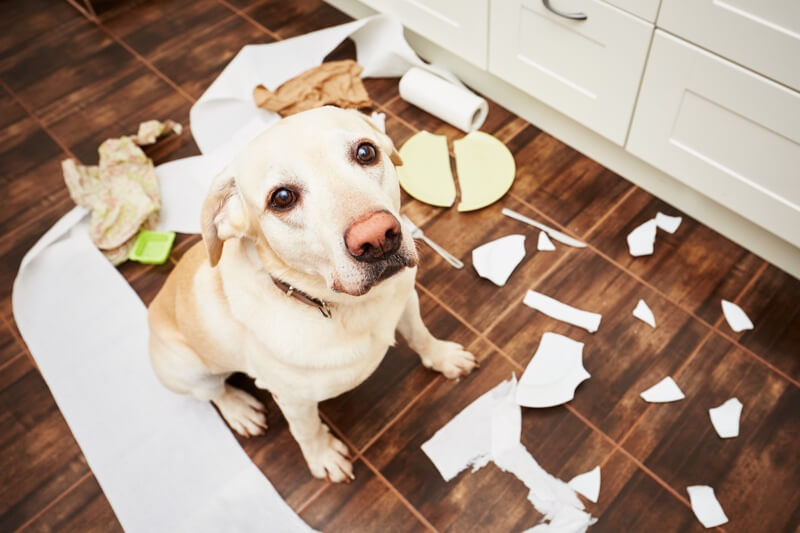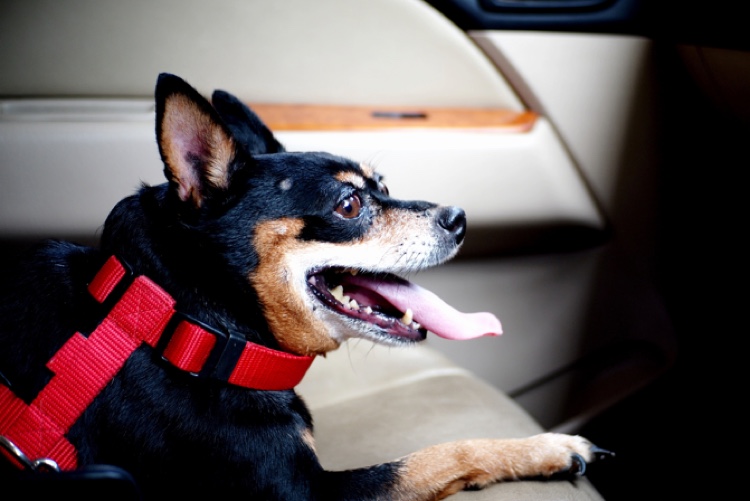If you’re a parent and you’ve had to childproof your house, you know that little kids can get into some odd places, especially areas they should never be in. And our furry family members are no different.
If you're going to pet-proof your home, it’s a fair assumption to think that nothing is safe when it comes to what your pets can get into. To help ensure your pet’s safety, it’s a good idea to take a holistic view of your home environment and identify any areas that may need some pet-proofing.
A Happy Home Is a Pet-Proofed Home
Whether it's singing in the shower or walking around in pajamas all day, when we’re inside our homes or apartments, we feel safe, cozy, and as if we can let our guard down. However, pet parents have to remain vigilant when it comes to ensuring their homes are safe for their puppy pals and feline friends. Let’s take a room-by-room look at how pet parents can pet-proof their homes:
Kitchen
The kitchen, for most pet parents, is where we prepare our meals and where our pets beg for food. While "food" and "kitchen" are basically synonymous, the words "food" and "hazard" should be viewed in a similar fashion.
Many delicious human foods, including chocolate, coffee, and onions can be toxic to our pets – some of which may be surprising to pet parents. In the kitchen, it’s also important to make sure the garbage can is securely covered, that food is properly stored away, and that any cleaning products are safely out of paw’s reach.
Living Room
O’ the living room, where families gather to relax and put their feet up, and where our pets climb on the furniture (even when they’re not allowed). It’s hard to imagine many safety concerns in our usually cozy sanctuaries, but there are a few potential hazards that require some pet proofing, like the furniture and carpet, which pets can easily damage.
It’s also important to keep electric cords tucked away and out of reach and make sure you have a protective screen in front of your fireplace. If you decorate your home with plants, keep in mind that several common household plants can be poisonous to our pals.
Bathroom
Chances are, if one of your four-legged family members is in the bathroom, they’re up to no good – drinking toilet water, shredding a roll of toilet paper, and so on.
While most of the damage a pet can do in the bathroom is minor, they can find themselves in serious trouble if they get into the wrong things, including medicines, household cleaners, and other common bathroom products, like drain cleaner and potpourri. It’s probably in your pet’s best interest to keep them out of the bathroom, but, if they insist, make sure any potential hazards are stored away and out of paw’s reach.
Bedroom
The bedroom is where we go to relax and get some shut-eye. However, we don’t want to be too relaxed when it comes to the environment of the bedroom. Like any other room in the house, the bedroom can host several hazards to our pets, including the potential for exposed electrical cords, curtain cords, and medicines accidentally left on the bedside stand. Take caution not to leave anything out in the open that can poison or cause harm to your pets.

Pet-Proofing the Great Outdoors
First and foremost, our strategic partner the American Society for the Prevention of Cruelty to Animals® (ASPCA®) does not condone letting cats run loose outside. But when it comes to pet-proofing the outdoors for our pooches, the first challenge can be preventing them from getting outside on their own accord.
Pet parents should be especially careful around doorways and windows, making sure their pal doesn’t make a dash or jump for it – or, even worse, accidentally fall. It is a good idea to get your pup microchipped in the event of an escape or disappearance.
While keeping a dog from exiting the house on their own can be a challenge, once they’re outdoors and under proper supervision, it’s a good idea to keep the following hazards in mind and away from any curious canine:
- Lawn chemicals and pesticides
- Mulches and fertilizers
- Compost piles
- Poisonous plants
- Swimming pools and ponds
- Insects, especially fleas and ticks
It’s also important to have a properly fenced-in yard to help keep your pup in and other potential threats out. There are a lot of potential risks in the outdoors, but a solid, well-maintained fence can help eliminate many of them.
Home Is Where the… Mischief Is?
From the bathroom to the backyard, there are countless places throughout the home – both indoors and outdoors – that you may need to address to help assure your pet’s safety and avoid a visit to the veterinarian’s office.
And while we’re on the subject of pet care, an ASPCA Pet Health Insurance plan can help provide coverage for routine visits, emergencies, and more! Get a free quote on a pet insurance plan that meets your – and your pet’s – needs.








